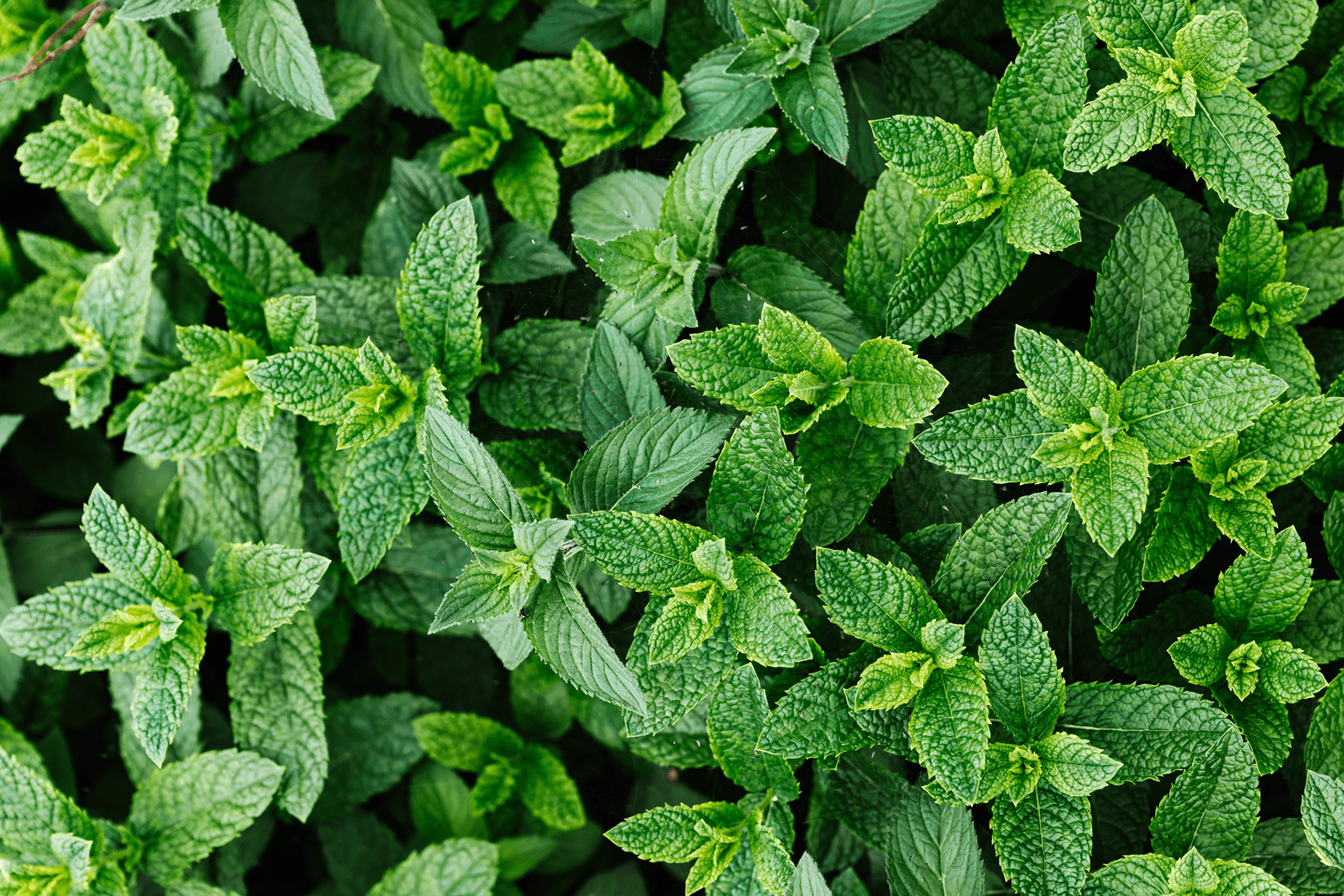Mint: An Intro to Backyard Herbs and Their Uses #1

What once was a few small patches of peppermint, started from seeds which fell from a mint-filled container, is now a large area where mint has taken over, even into the grassy yard. While it might be aggravating to some, I am thrilled that when I mow the yard I can get some aromatherapy!
The overabundance of this plant has led me to get more creative with the use, adding to my repertoire of a simple, refreshing summer mint tea.*
An excellent way to use most fresh herbs (as well as with dried herbs) is to create a tincture or an extract. Making tinctures and extracts are similar processes. The only difference is that an extract is strictly made with an alcohol and is used for flavoring in cooking, whereas a tincture may be made with an alcohol base (like 70-80 proof Vodka) or with food-grade vegetable glycerin, to make it safer for children. A tincture is a solution used orally for its health benefits. [Note: using true peppermint as opposed to spearmint will yield a stronger extract or tincture flavor.]
Before we get into the how, let’s talk about the why.
Why make a mint tincture?
Various species of mint (with close to twenty-five worldwide) have been used for thousands of years to aid in the treatment of all sorts of digestive distress, nervous disorders, and hormonal issues, for cleaning the mouth, and for improving brain function. The invigorating and cheerful nature of mint has made it a favorite among people, with the earliest documented use occurring in 1550BC.
I want to have this incredibly medicinal herb available to me year-round, so I enjoy making my own tinctures and extracts from the whole plant. As long as I keep it in a dark, airtight jar away from sunlight, it will last me three to four years.
How I make mint tincture or extract:
- Fill a large, sterilized Mason jar with mint leaves and stems that have been cleaned and strained. Make sure the mint is from an area which has not been exposed to any kind of pesticide.
- Stir the leaves around a bit to release some of the oils. Some people like to first cut the mint into strips.
- Add a cheap 70-80 proof vodka to the jar, making sure all the leaves are covered. If I am making a tincture for my child, I will use food-grade vegetable glycerin, which makes the solution very sweet. Another option is to do a half and half mix of glycerin and alcohol to cut down on the sweetness.
- After filling the jar with either the glycerin or alcohol, I cover and shake the jar well, then store for six weeks away from sunlight, shaking the jar every couple of days. I always notice the leaves getting brown, which is normal.
- At the end of the six weeks, using a cheese cloth to strain the material from the tincture, I pour it into a large glass measuring cup (or any other type of sterilized container with a spout from which to pour). I can then separate the tincture into small dropper bottles. I like to reuse bottles from other products, so I usually have a few of these stocked up.
I enjoy a dropper-full at the end of every meal or at least once a day as a nerve tonic.
Cooking with a mint extract is especially fun. So many foods and drinks are delicious with a little splash of mint flavor, including coffee, teas, cookies, brownies, cakes, and in homemade candies, for instance.
If you really have a lot of mint growing in your yard, it is also a great pest repellent! Root up some of the mint that is taking over a certain area, and transplant it to be near your garden. Alternatively, cut several bunches and hang them around your garden.
If you are wondering if you have a mint species growing in your yard, the easiest way to identify it is by the leaves and the minty aroma released when you roll a leaf between your thumb and index finger. Most mint plants will have what are called lance-shaped leaves, with toothed edges that come to a rounded point. Different shades of green and/or purple can be noted, as well, depending on the species. True peppermint will be solid green.
*Mint tea: Rinse fresh mint leaves and place in a French Press or other tea strainer with boiling water; cool and add to ice with a slice of lemon.
THIS WEBSITE IS NOT INTENDED FOR PROVIDING MEDICAL ADVICE
